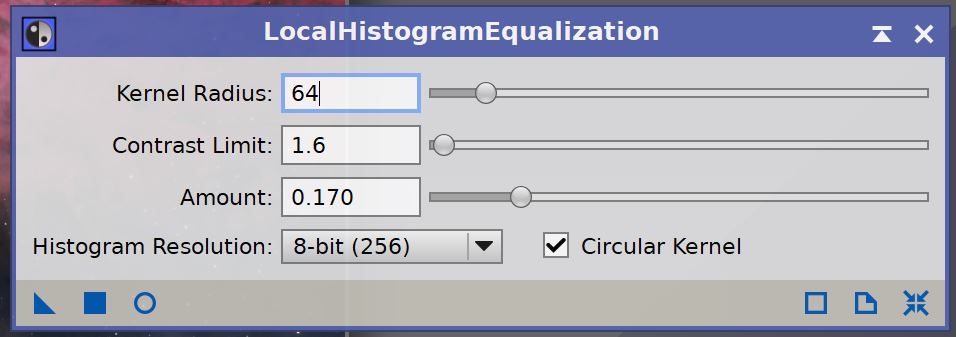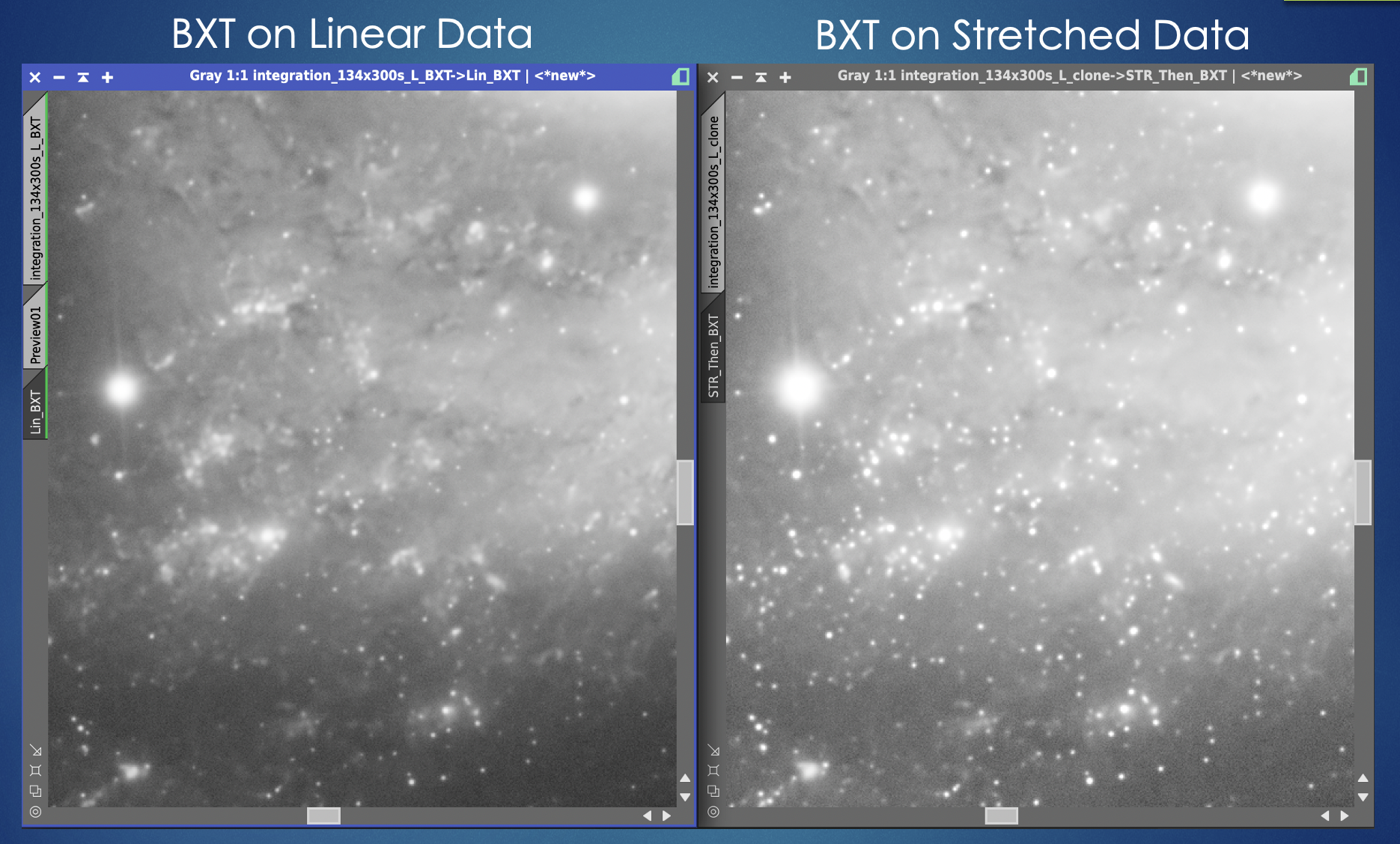Speaking for myself, I never use BXT on anything but linear images very early in the workflow. That is because, as others have noted, it is designed for linear data and Russ has been very clear on that point.
On the subject of "looking overcooked" that can happen with any deconvolution of any kind at any time. It often results in what is commonly called "threadlike detail".
OTOH, some objects, especially some planetary nebula, actually do have threadlike detail so one has to be careful in assuming that all such detail is a result of "BXT overcooking". My rule is to look at the unconvolved image after giving it a temporary stretch (just to examine it, you do the BXT on unstretched data, of course) and see if there is a hint of such structure. Using the BXT real time preview and blinking it on and off is helpful as well here to see what the enhancement is doing and where. If there is such real detail, then "looking overcooked" may not be actually overcooked and the enhanced structure may be real. A perfect example is
Abell 30 that I processed yesterday, which is why this comes to mind. Pretty much all the images of that object show the detail to some degree, even including images from the Chandra X-ray telescope. That leads to another "reality check" and that is professional images of the same object, where available.
The biggest deconvolve error is to use non-astro AI enhancement programs on non-linear astro images. I have seen a small handful of images on AB that have done that and they look nothing short of bizarre. I will be kind and hope the imagers were just being "artistic".

 .
.
